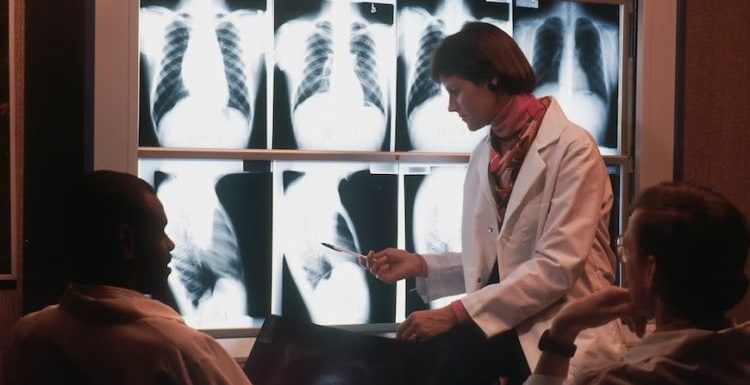
A radiologist is a medical professional who diagnoses illnesses using medical imaging methods like X-rays, CT scans, and MRIs. Radiology serves a critical role in contemporary medicine by giving precise diagnoses that directly treat several illnesses, from cancer to heart disease. They can assist in identifying illnesses in their early stages, when they are frequently most curable, by employing these specific imaging techniques. Additionally, experts in radiology professions collaborate closely with other medical specialists to create successful patient treatment plans.
The work that radiologists do
Radiologists use various medical imaging methods to identify disorders. These procedures employ sophisticated technology to provide finely detailed pictures of the body’s interior, which they may then evaluate to find any anomalies or disorders.
Radiologists collaborate extensively with other clinicians, including surgeons and primary care physicians, and employ medical imaging tools to create successful treatment regimens for patients.
An essential component of the job is the interpretation of medical images. They are qualified to recognise anomalies in medical pictures and to provide precise diagnoses in response to such images. Because slight irregularities can substantially impact the diagnosis and management of a patient’s illness, this needs a high degree of skill and attention to detail. They ensure that patients receive the best care possible by making accurate diagnoses.
Education and Training
After medical school, they must finish a radiology residency program, which usually lasts four years. Radiologists receive in-depth instruction in medical imaging methods and image interpretation during their residency.
After completing a residency in that field, some of them might continue their education in a radiology subspecialty, like neuroradiology or cardiovascular radiology. These subspecialties concentrate on medical imaging of a specific organ, like the heart or brain.
To give their patients the best care possible, these specialists must stay current on the latest imaging methods and technologies.
Responsibilities in patient care
Radiologists are essential for the early detection and diagnosis of many diseases, such as cancer and heart disease. Experts in Radiologist professions can help identify anomalies and offer precise diagnoses that can direct the treatment of a patient’s condition by employing these techniques and interpreting the images that result.
Future developments and difficulties
The demand for radiologists has increased due to the expanding use of medical imaging techniques in contemporary medicine. As more and more patients undergo imaging procedures, there is a growing demand for these qualified specialists to interpret the resulting images and make precise diagnoses.
As they may work long hours and handle a high volume of patients, the increased workload can occasionally result in career burnout.
Additionally, to stay abreast of the most recent advancements, they must constantly update their knowledge and skills due to the rapid pace of technological change in medical imaging.
Although they can be challenging to handle, these difficulties also give radiologists chances to advance their professional development.
Conclusion
Radiologists are undoubtedly one of the true heroes of modern medicine. From their incredibly detailed images, they provide invaluable insight into the inner workings of the human body. Through their skill and expertise, they can help diagnose diseases, identify abnormalities and provide early intervention for severe medical conditions.
They also play an essential role in guiding medical treatment and providing necessary follow-up care. Even though they often go unseen, they are critical medical community members and show heroic dedication to improving the lives of the people they serve.
